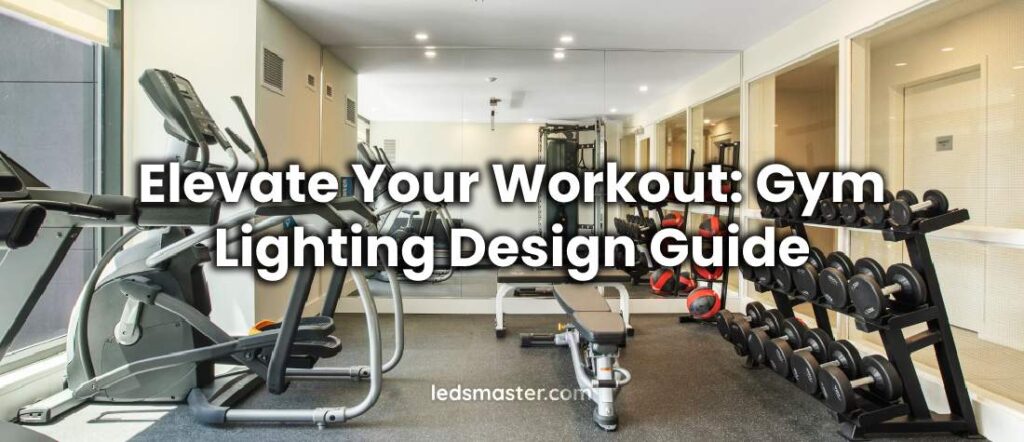Gym lighting enhances the workout experience by providing optimal illumination for athletes and reducing maintenance costs. Our commercial LED lights are designed to replace metal halide, halogen, or high-pressure sodium lamps, offering up to 85% energy savings. With a lifespan of up to 150,000 hours, our lights minimize maintenance, and their lightweight design simplifies installation on high ceilings. For high bay lighting, our LED options are the ideal choice for any gym.
Table of Contents
ToggleIndoor Gym Lighting Design
Lighting Requirements and Brightness
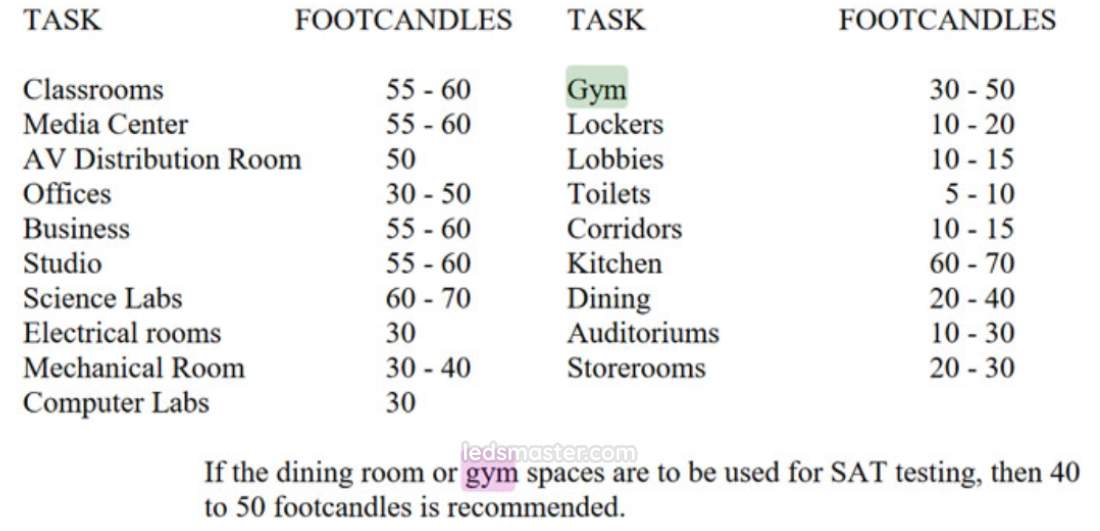 In a typical basketball gym, brightness levels between 30 to 50 foot-candles (322 to 538 lux) are generally adequate for general recreational play. This range provides enough light for players to see the court clearly and for spectators to follow the action comfortably. However, for professional sports settings where high-definition visibility is crucial, brightness levels need to be elevated to around 800 to 1000 lux. This higher illumination ensures that every detail of the game is visible, enhancing both player performance and spectator experience.
In a typical basketball gym, brightness levels between 30 to 50 foot-candles (322 to 538 lux) are generally adequate for general recreational play. This range provides enough light for players to see the court clearly and for spectators to follow the action comfortably. However, for professional sports settings where high-definition visibility is crucial, brightness levels need to be elevated to around 800 to 1000 lux. This higher illumination ensures that every detail of the game is visible, enhancing both player performance and spectator experience.
In gym environments, adequate lighting is not only about visibility but also about creating an environment conducive to focus and safety. Proper illumination helps prevent accidents and ensures that all gym activities can be performed safely, minimizing the risk of injury. Additionally, well-lit spaces can help maintain athletes’ concentration and performance levels by providing a clear view of their surroundings.
Uniformity of Lighting
Lighting uniformity is a critical aspect of gym lighting design that directly impacts the quality of the lighting experience. Uniform lighting means that the light is distributed evenly across the entire area, reducing the risk of shadows and glare that can cause visual fatigue. For gym environments, achieving high uniformity is crucial to ensure that athletes and spectators experience consistent lighting conditions throughout the space.
Our LED solutions are designed to offer varying levels of uniformity to meet different standards. Uniformity levels of 0.5, 0.6, and 0.7 are available, catering to recreational, professional, and international standards, respectively. Higher levels of uniformity are particularly important for professional and competitive sports where precise and consistent lighting can affect performance. To achieve these higher levels of uniformity, it may be necessary to install additional LED fixtures and employ advanced lighting design techniques to ensure even light distribution across the entire gym area.
Daylight Control and Energy Efficiency
Incorporating daylight control systems into gym lighting designs can significantly enhance energy efficiency. These systems use photocells to monitor the amount of natural light entering the gym and adjust the artificial lighting accordingly. When sufficient daylight is available, the system can dim or turn off certain lights, reducing overall energy consumption.
This approach not only lowers energy costs but also supports environmental sustainability by minimizing the gym’s carbon footprint. However, this system is most effective in gyms with ample natural light sources, such as those with large windows or skylights. For gyms without windows, daylight control may not be applicable, and the initial setup cost for such systems might be higher. Nonetheless, integrating daylight control systems can provide long-term savings and contribute to a more energy-efficient facility.
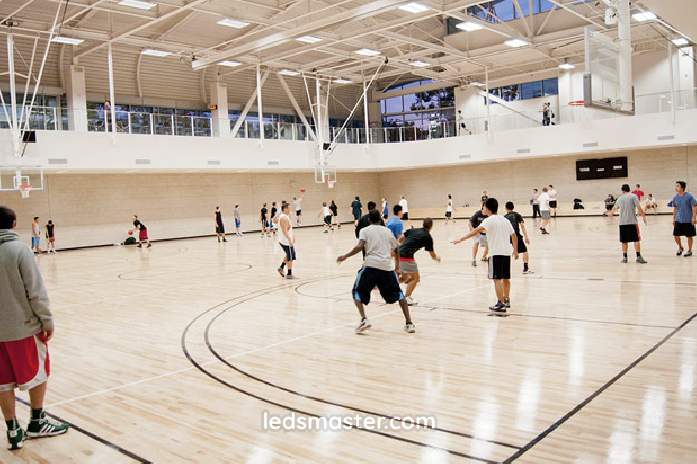
Motion Sensors and Dimmable Lights
Motion sensors and dimmable lights are advanced features that enhance the functionality and efficiency of gym lighting. Motion sensors automatically detect movement and can turn lights on or off based on occupancy, ensuring that lighting is only used when needed. This feature is particularly useful in large gym spaces where activity levels can vary throughout the day.
For example, in a basketball court, motion sensors can help manage lighting by turning off lights when the court is unoccupied for a specified period. This not only conserves energy but also reduces operational costs. Dimmable LED lights complement this by allowing for adjustable light levels based on activity needs, further optimizing energy use and creating the right ambiance for different types of workouts or events.
Power and Beam Angle
Choosing the right power and beam angle for gym lighting is essential for achieving optimal illumination and coverage. The power of the lighting fixtures determines the total light output, measured in lumens, which needs to be matched to the gym’s size and brightness requirements. For instance, a 1000-square-meter gym with a requirement of 400 lux would need approximately 3000 watts of LED lighting to provide adequate illumination.
The beam angle of the lights also plays a crucial role in determining how the light is distributed. A narrower beam angle focuses light more precisely, which can be beneficial for areas requiring high-intensity illumination. Conversely, a wider beam angle spreads light over a larger area, which can help reduce the number of fixtures needed but may require more precise placement to avoid dark spots.
Outdoor Gym Lighting Design
Illumination and Coverage
For outdoor gyms, ensuring sufficient illumination is essential for safe and effective workouts during early mornings or late evenings. Achieving comprehensive coverage requires a combination of pathway lights, area lights, and floodlights. Pathway lights are used to illuminate walkways and entry points, enhancing safety by highlighting potential tripping hazards and ensuring users can navigate the area with ease. Area lights provide broader illumination across exercise zones and workout stations, making sure that the entire gym space is evenly lit and that users can clearly see their surroundings.
Floodlights, with their high intensity, are particularly effective for lighting large areas such as outdoor courts or fields. They deliver bright and focused illumination that eliminates shadows and provides uniform lighting from all angles. Proper coverage is crucial, and careful planning of the lighting layout is required to distribute light evenly. This approach helps to avoid inadequately lit areas and ensures a consistently safe and functional environment for all users.
Security Considerations
Security is a significant concern for outdoor gyms, and effective lighting strategies are vital for deterring crime and enhancing safety. High-intensity floodlights play a crucial role by providing bright, expansive illumination that covers large areas and reduces the presence of dark, unobserved corners where illicit activities could occur. The intense lighting acts as a deterrent to potential wrongdoers, making the facility less attractive for vandalism or other criminal behavior.
In addition to floodlights, perimeter lighting is essential for securing the boundaries of the gym. By illuminating the edges of the facility, perimeter lights help protect against unauthorized access and ensure that all areas are visible and monitored. Motion-sensor lights add an extra layer of security and energy efficiency. These sensors detect movement and activate the lights only when necessary, thereby conserving energy while also alerting users and potentially scaring off intruders with sudden illumination.
Environmental Impact
Minimizing the environmental impact of outdoor gym lighting is important for sustainability and protecting the natural environment. One key aspect is reducing light pollution, which occurs when excessive or misdirected artificial light interferes with the natural night environment. To address this, outdoor gym lighting should employ fixtures with proper shielding and directional lighting. Shielded fixtures direct light downward and prevent light from spilling into the sky or neighboring areas, thus minimizing skyglow and light trespass.
LEDs are particularly effective in this regard due to their ability to emit light in a specific direction, reducing scatter and ensuring that illumination is focused precisely where it is needed. Additionally, the use of LEDs helps to limit light pollution compared to traditional lighting sources. Properly designed outdoor lighting also considers the impact on wildlife and surrounding areas. Excessive or poorly shielded lighting can disrupt nocturnal animals and alter their natural behaviors. By opting for environmentally friendly LED fixtures with appropriate shielding, outdoor gyms can enhance visibility for users while protecting the local ecosystem and minimizing disturbances to wildlife.
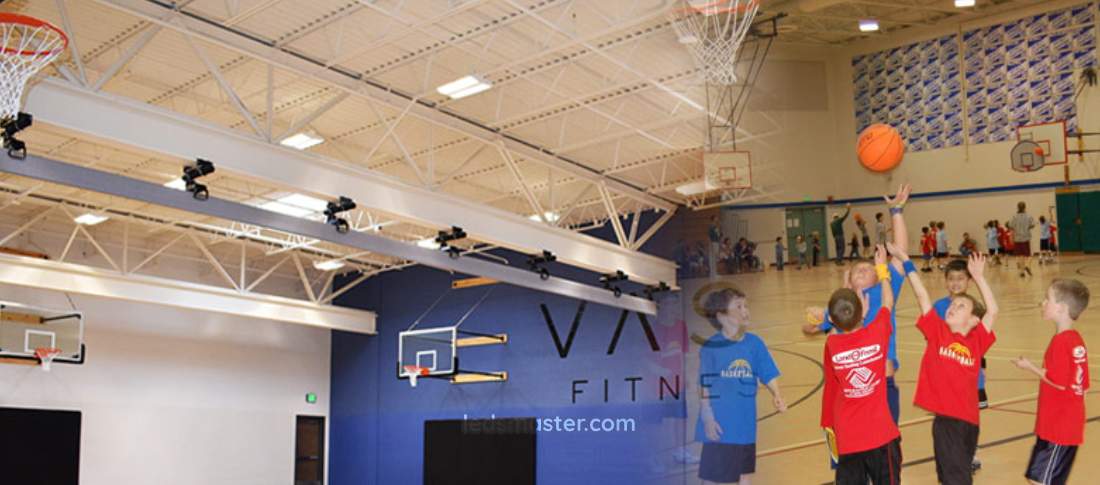
Benefits of LED Lighting
Energy Efficiency and Longevity
LED lighting stands out for its exceptional energy efficiency compared to traditional high-pressure sodium (HPS) or metal halide lamps. LEDs deliver a luminous efficiency of up to 140 lumens per watt (lm/W), which is 2 to 3 times greater than that of older lighting technologies. This higher efficiency means that LEDs produce more light with less energy, significantly reducing electricity consumption and operational costs. Additionally, LEDs boast a remarkable lifespan of up to 150,000 hours, which far surpasses the longevity of traditional lighting options. This extended lifespan not only minimizes the frequency of replacements but also lowers maintenance costs, making LEDs a cost-effective choice in the long run. Their durability and extended operational life contribute to both economic savings and reduced environmental impact, as fewer resources are required for replacements and disposal.
Instant On/Off and Flicker-Free Operation
One of the key advantages of LED lighting is its ability to provide instant illumination without any warm-up time. Unlike traditional lighting systems, which often require several minutes to reach full brightness, LEDs light up immediately upon being switched on. This feature ensures that users have instant access to full brightness, which is crucial for environments where prompt and reliable lighting is essential, such as gyms and sports facilities. Additionally, LEDs are designed to operate without flickering, a common issue with older lighting technologies. This flicker-free operation is particularly important in settings where high-speed video capture is required or where dynamic activities are taking place. The absence of flicker enhances visual clarity and reduces eye strain, making LEDs a better choice for environments that demand consistent and stable lighting conditions.
Environmental and Safety Benefits
LEDs offer significant environmental and safety benefits over traditional lighting options. Unlike high-pressure sodium and metal halide lamps, LEDs do not contain hazardous materials such as mercury, which poses environmental and health risks if improperly disposed of. This makes LEDs a more environmentally friendly choice, contributing to a reduction in hazardous waste and promoting safer disposal practices. Furthermore, the flicker-free operation of LEDs enhances visual comfort and safety. Flickering light can cause visual discomfort, headaches, and even trigger seizures in sensitive individuals, making LEDs a safer alternative. Their stable lighting conditions are especially beneficial in high-intensity settings, such as sports facilities, where consistent and clear visibility is crucial for both performance and safety. By choosing LEDs, facilities can improve overall safety, reduce environmental impact, and create a more comfortable and effective lighting environment.
Replacing Old Gym Lights
Significant Energy Savings
Upgrading from traditional gym lighting to LED technology offers notable benefits, including substantial energy savings. For instance, replacing a 400-watt metal halide lamp with a 100-watt LED fixture can save 300 watts of energy while maintaining comparable or even superior brightness levels. The efficiency of LEDs means that they use much less power to deliver the same amount of light, translating into lower electricity bills. This reduction in power consumption can lead to significant cost savings over time, making LED lighting a cost-effective choice for gyms with extensive lighting needs.
Improved Lighting Quality
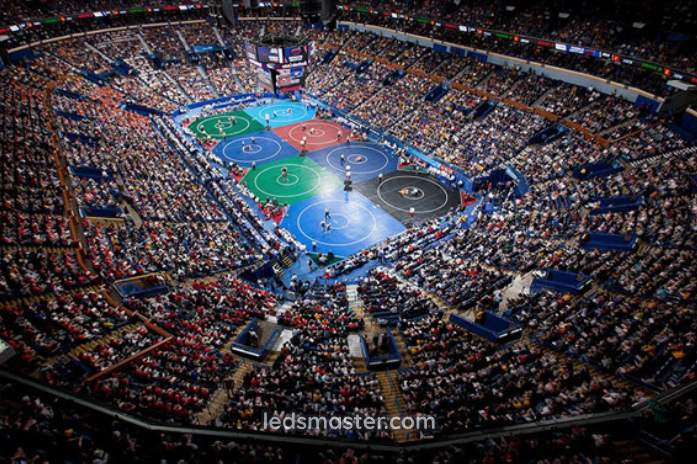 In addition to energy savings, LEDs provide enhanced lighting quality. They emit bright, clear light with excellent color rendering, which improves visibility and reduces shadows within the gym. This superior illumination contributes to a more motivating and safer workout environment, allowing users to see clearly and perform exercises with greater precision. Unlike traditional lamps, LEDs offer instant full brightness without any warm-up time, ensuring that the gym is well-lit from the moment the lights are switched on.
In addition to energy savings, LEDs provide enhanced lighting quality. They emit bright, clear light with excellent color rendering, which improves visibility and reduces shadows within the gym. This superior illumination contributes to a more motivating and safer workout environment, allowing users to see clearly and perform exercises with greater precision. Unlike traditional lamps, LEDs offer instant full brightness without any warm-up time, ensuring that the gym is well-lit from the moment the lights are switched on.
Reduced Maintenance Requirements
LED lighting also significantly reduces maintenance needs. With a lifespan of up to 150,000 hours, LEDs outlast traditional lamps, which typically have shorter operational lives and require frequent bulb replacements. This extended lifespan not only minimizes the frequency of replacements but also lowers maintenance costs. The reduced need for maintenance and bulb changes results in fewer disruptions and lower overall operational costs for the gym.
Expert Consultation for Optimal Solutions
When considering an upgrade to LED lighting, consulting with lighting experts is advisable. Professionals can assess the gym’s layout, lighting requirements, and existing infrastructure to recommend the most suitable LED fixtures. They can provide guidance on the appropriate wattage and design options to ensure optimal lighting performance and efficiency. This expert advice helps tailor the lighting solution to meet the specific needs of the gym, ensuring the best possible results.
Enhancing the Workout Environment
Adopting modern LED lighting solutions not only improves the energy efficiency and maintenance of gym lighting but also enhances the overall workout environment. The improved lighting quality creates a safer and more enjoyable space for users, making it a valuable investment for any gym looking to upgrade its lighting system. By choosing LEDs, gyms can achieve substantial energy savings, reduce operational costs, and provide a superior workout experience for their members.
Conclusion
Our LED gym lighting solutions cater to a diverse range of facilities, including basketball courts, badminton courts, and school halls. By transitioning from traditional lighting to LEDs, gyms benefit from improved energy efficiency, reduced maintenance costs, and enhanced illumination quality. LEDs offer up to 85% energy savings and a lifespan of up to 150,000 hours, making them a long-lasting and cost-effective choice. The advanced features of LED lighting, such as instant on/off capabilities and flicker-free operation, ensure clear visibility and a safer workout environment. Upgrading to modern LED solutions not only elevates the gym’s lighting performance but also contributes to a more motivating and efficient space for athletes and users.

